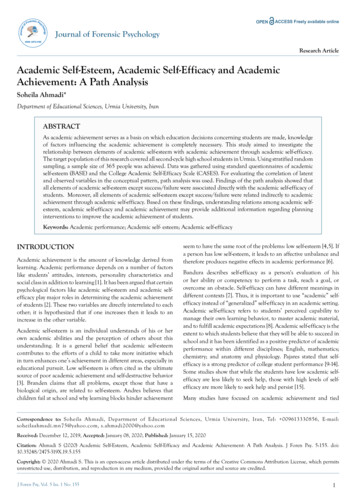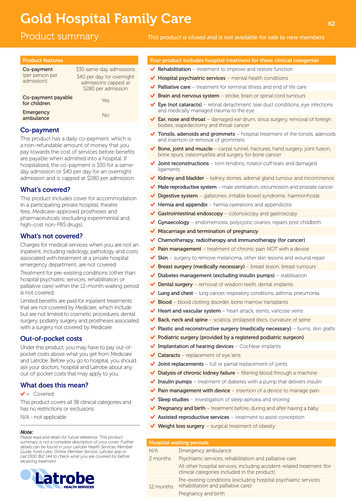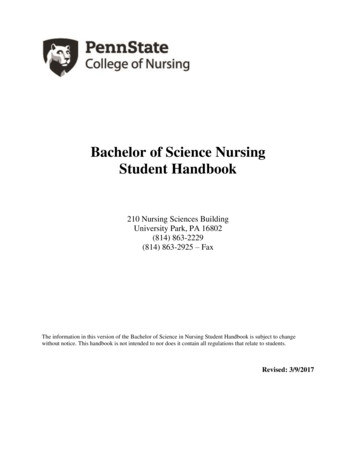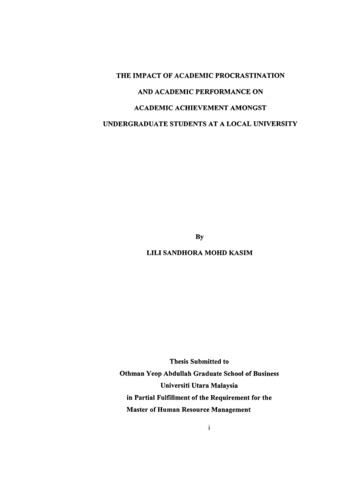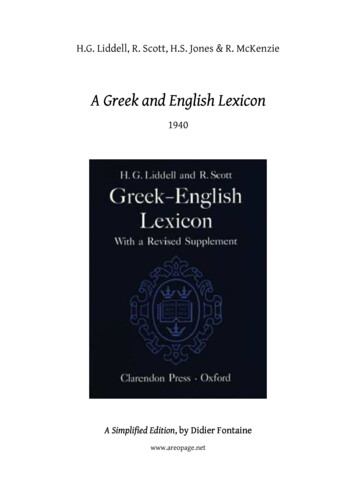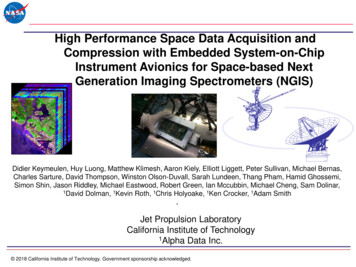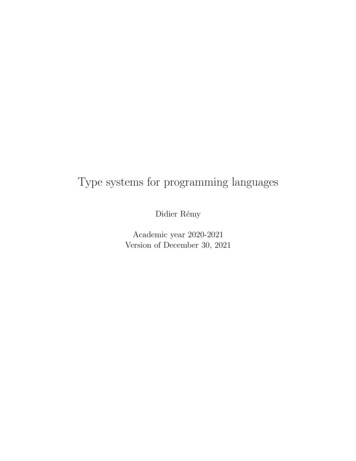
Transcription
Type systems for programming languagesDidier RémyAcademic year 2020-2021Version of December 30, 2021
2
Contents1 Introduction1.1 Overview of the course . . . . .1.2 Requirements . . . . . . . . . . .1.3 About Functional Programming1.4 About Types . . . . . . . . . . .1.5 Acknowledgment . . . . . . . . .2 The untyped λ-calculus2.1 Syntax . . . . . . . . . . . . . . . . . . . . . . .2.2 Semantics . . . . . . . . . . . . . . . . . . . . .2.2.1 Strong v.s. weak reduction strategies2.2.2 Call-by-value semantics . . . . . . . . .2.3 Answers to exercises . . . . . . . . . . . . . . .3 Simply-typed lambda-calculus3.1 Syntax . . . . . . . . . . . . . . . . . . . .3.2 Dynamic semantics . . . . . . . . . . . . .3.3 Type system . . . . . . . . . . . . . . . . .3.4 Type soundness . . . . . . . . . . . . . . .3.4.1 Proof of subject reduction . . . .3.4.2 Proof of progress . . . . . . . . . .3.5 Simple extensions . . . . . . . . . . . . .3.5.1 Unit . . . . . . . . . . . . . . . . .3.5.2 Boolean . . . . . . . . . . . . . . .3.5.3 Pairs . . . . . . . . . . . . . . . . .3.5.4 Sums . . . . . . . . . . . . . . . . .3.5.5 Modularity of extensions . . . . .3.5.6 Recursive functions . . . . . . . .3.5.7 A derived construct: let-bindings3.6 Exceptions . . . . . . . . . . . . . . . . . .3.6.1 Semantics . . . . . . . . . . . . . .3.7. 7. 9. 9. 9. .
4CONTENTS3.73.83.6.2 Typing rules . . . . . . . . . . . . .3.6.3 Variations . . . . . . . . . . . . . . .References . . . . . . . . . . . . . . . . . . .3.7.1 Language definition . . . . . . . . .3.7.2 Type soundness . . . . . . . . . . .3.7.3 Tracing effects with a monad . . .3.7.4 Memory deallocation . . . . . . . .Ommitted proofs and answers to exercises.4 Polymorphism and System F4.1 Polymorphism . . . . . . . . . . . . . . . . . . . . . . . .4.2 Polymorphic λ-calculus . . . . . . . . . . . . . . . . . .4.2.1 Types and typing rules . . . . . . . . . . . . . .4.2.2 Semantics . . . . . . . . . . . . . . . . . . . . . .4.2.3 Extended System F with datatypes . . . . . .4.3 Type soundness . . . . . . . . . . . . . . . . . . . . . . .4.4 Type erasing semantics . . . . . . . . . . . . . . . . . .4.4.1 Implicitly-typed System F . . . . . . . . . . . .4.4.2 Type instance . . . . . . . . . . . . . . . . . . .4.4.3 Type containment in System Fη . . . . . . . .4.4.4 A definition of principal typings . . . . . . . .4.4.5 Type soundness for implicitly-typed System F4.5 References . . . . . . . . . . . . . . . . . . . . . . . . . .4.5.1 A counter example . . . . . . . . . . . . . . . .4.5.2 Internalizing configurations . . . . . . . . . . .4.6 Damas and Milner’s type system . . . . . . . . . . . .4.6.1 Definition . . . . . . . . . . . . . . . . . . . . . .4.6.2 Syntax-directed presentation . . . . . . . . . .4.6.3 Type soundness for ML . . . . . . . . . . . . .4.7 Ommitted proofs and answers to exercises . . . . . . .5 Type reconstruction5.1 Introduction . . . . . . . . . . . . . . . . . . .5.2 Type inference for simply-typed λ-calculus5.2.1 Constraints . . . . . . . . . . . . . . .5.2.2 A detailed example . . . . . . . . . .5.2.3 Soundness and completeness of type5.2.4 Constraint solving . . . . . . . . . . .5.3 Type inference for ML . . . . . . . . . . . . .5.3.1 Milner’s Algorithm J . . . . . . . . .5.3.2 Constraints . . . . . . . . . . . . . . . . . . . . . . . . . . . . . . . . . . .inference. . . . . . . . . . . . . . . . . . . . 7778808284.91919293949696989899
5CONTENTS5.45.55.65.75.85.3.3 Constraint solving by example . . . .5.3.4 Type reconstruction . . . . . . . . . . .Type annotations . . . . . . . . . . . . . . . . .5.4.1 Explicit binding of type variables . . .5.4.2 Polymorphic recursion . . . . . . . . .5.4.3 mixed-prefix . . . . . . . . . . . . . . .Equi- and iso-recursive types . . . . . . . . . .5.5.1 Equi-recursive types . . . . . . . . . . .5.5.2 Iso-recursive types . . . . . . . . . . . .5.5.3 Algebraic data types . . . . . . . . . .HM(X) . . . . . . . . . . . . . . . . . . . . . . .Type reconstruction in System F . . . . . . .5.7.1 Type inference based on Second-order5.7.2 Bidirectional type inference . . . . . .5.7.3 Partial type inference in MLF . . . . .Proofs and Solution to Exercises . . . . . . . . . . . . . . . . . . . . . . . . . . . . . . . . . . . . . . . . . . . . . . . . . . . . . . . . . . . . . . . . . . . . . . . . . . . . . . . .unification. . . . . . . . . . . . . . . . . . .6 Existential types6.1 Towards typed closure conversion . . . . . . . . . . . . . . .6.2 Existential types . . . . . . . . . . . . . . . . . . . . . . . . .6.2.1 Existential types in Church style (explicitly typed)6.2.2 Implicitly-typed existential types . . . . . . . . . . .6.2.3 Existential types in ML . . . . . . . . . . . . . . . . .6.2.4 Existential types in OCaml . . . . . . . . . . . . . . .6.3 Typed closure conversion . . . . . . . . . . . . . . . . . . . .6.3.1 Environment-passing closure conversion . . . . . . .6.3.2 Closure-passing closure conversion . . . . . . . . . .6.3.3 Mutually recursive functions . . . . . . . . . . . . . .7 Overloading7.1 An overview . . . . . . . . . . . . . . . . . . . . . . . . . . . .7.1.1 Why use overloading? . . . . . . . . . . . . . . . . . .7.1.2 Different forms of overloading . . . . . . . . . . . . .7.1.3 Static overloading . . . . . . . . . . . . . . . . . . . .7.1.4 Dynamic resolution with a type passing semantics7.1.5 Dynamic overloading with a type erasing semantics7.2 Mini Haskell . . . . . . . . . . . . . . . . . . . . . . . . . . . .7.2.1 Examples in MH . . . . . . . . . . . . . . . . . . . . .7.2.2 The definition of Mini Haskell . . . . . . . . . . . . .7.2.3 Semantics of Mini Haskell . . . . . . . . . . . . . . . .7.2.4 Elaboration of expressions . . . . . . . . . . . . . . 127. 128. 130. 130. 133. 135. 136. 137. 137. 139. 141.145. 145. 145. 146. 147. 147. 148. 149. 149. 150. 152. 154
6CONTENTS7.37.47.57.2.5 Summary of the elaboration . . . .7.2.6 Elaboration of dictionaries . . . . .Implicitly-typed terms . . . . . . . . . . . .Variations . . . . . . . . . . . . . . . . . . .Ommitted proofs and answers to exercises.8 Logical Relations8.1 Introduction . . . . . . . . . . . . . . . . . . .8.1.1 Parametricity . . . . . . . . . . . . . .8.2 Normalization of simply-typed λ-calculus .8.3 Observational equivalence . . . . . . . . . . .8.4 Logical rel in simply-typed λ-calculus . . .8.4.1 Logical equivalence for closed terms8.4.2 Logical equivalence for open terms .8.5 Logical rel. in F . . . . . . . . . . . . . . . .8.5.1 Logical equivalence for closed terms8.6 Applications . . . . . . . . . . . . . . . . . . .8.7 Extensions . . . . . . . . . . . . . . . . . . . .8.7.1 Natural numbers . . . . . . . . . . . .8.7.2 Products . . . . . . . . . . . . . . . .8.7.3 Sums . . . . . . . . . . . . . . . . . . .8.7.4 Lists . . . . . . . . . . . . . . . . . . .8.7.5 Existential types . . . . . . . . . . . .8.7.6 Step-indexed logical relations . . . .155157159165169.171. 171. 171. 173. 176. 177. 177. 179. 182. 183. 188. 190. 190. 191. 191. 191. 191. 192
Chapter 1IntroductionThese are course notes for part of the master course Typing and Semantics of functionalProgramming Languages taught at the MPRI (Parisian Master of Research in ComputerScience1 ) in 2010, 2011, 2012.The aim of the course is to provide students with the basic knowledge for understanding modern programming languages and designing extensions of existing languages or newlanguages. The course focuses on the semantics of programming languages.We present programming languages formally, with their syntax, type system, and operational semantics. We then prove soundness of the semantics, i.e. that well-typed programscannot go wrong. We do not study full-fledged languages but their core calculi, from whichother constructions can be easily added. The underlying computational language is theuntyped λ-calculus, extended with primitives, store, etc.1.1Overview of the courseThese notes only cover part of the course, described below in the paragraph Typed languages. Here, we give a brief overview of the whole course to put the study of Typedlanguages into perspective.Untyped languages. Although all the programming languages we study are typed, theirunderlying computational model is the untyped λ-calculus That is, types can be droppedafter type checking and before evaluation.Therefore, the course starts with a few reminders about the untyped λ-calculus, eventhough those are assumed to be known. We show how to extend the pure λ-calculus withconstants and primitives and a few other constructs to make it a small programming language. This is also an opportunity to present source program transformations and compi1Master Parisian de Recherche en Informatique.7
8CHAPTER 1. INTRODUCTIONlation techniques for function languages, which do not depend much on types. This part istaught by Xavier Leroy.Typed languages Types play a central role in the design of modern programming languages, so they also play a key role in this course. In fact, once we restrict our study tofunctional languages, the main differences between languages lie more often in the differencesbetween their type systems than between other aspects of their design.Hence, the course is primarily structured around type systems. We remind the simplytyped λ-calculus, the simplest of type systems for functional languages, and show how toextend it with other fundamental constructs of programming languages.We introduce polymorphism with System F. We present ML as a restriction of System Ffor which type reconstruction is simple and efficient. We actually introduce a slight generalization HM(X) of ML to ease and generalize the study of type reconstruction for ML. Wediscuss techniques for type reconstruction in System F—but without formalizing the details.We present existential types, first in the context of System F, and then discuss theirintegration in ML.Finally, we study the problem of overloading. Overloading differs from other languageconstructs as the semantics of source programs depend on their types, even though typesshould be erased at runtime! We thus use overloading as an example of elaboration of sourceterms, whose semantics is typed, into an internal language, whose semantics is untyped.Towards program proofs Types, as in ML or System F, ensure type soundness, i.e. thatprograms do not go wrong. However useful, this remains a weak property of programs. Oneoften wishes to write more accurate specifications of the actual behavior of programs andprove the implementation correct with respect to them. Finer invariants of data-structuresmay be expressed within types using Generalized Algebraic Data Types (GADT); or one stepfurther using dependent types. However, one may also describe the behavior of programsoutside of proper types per se, by writing logic formulas as pre and post conditions, andverifying them mechanically, e.g. with a proof assistant. This spectrum of solutions will bepresented by Yann Regis-Gianas.Subtyping and recursive types The last part of the course, taught by Giuseppe Castagna,focuses on subtyping, and in particular on semantic subtyping. This allows for very precisetypes that can be used to describe semi-structured data. Recursive types are also presentedin this context, where they play a crucial role.
1.2. REQUIREMENTS1.29RequirementsWe assume the reader familiar with the notion of programming languages. Some experienceof programming in a typed functional language such as ML or Haskell will be quite helpful.Some knowledge in operational semantics, λ-calculus, terms, and substitutions is needed.The reader with missing background may find relevant chapters in the book Types AndProgramming Languages by Pierce (2002).1.3About Functional ProgrammingThe term functional programming means various things. Functional programming viewsfunctions as ordinary data which, in particular, can be passed as arguments to other functionsand stored in data structures.A common idea behind functional programming is that repetitive patterns can be abstracted away as functions that may be called several times so as to avoid code duplication.For this reason, functional programming also often loosely or strongly discourages the useof modifiable data, in favor of effect-free transformations of data. (In contrast, the mainstream object-oriented programming languages view objects as the primary kind of data andencourage the use of modifiable data.)Functional programming languages are traditionally typed (Scheme and Erlang are exceptions) and have close connections with logic. We will focus on typed languages. Becausefunctional programming puts emphasis on reusability and sharing multiple uses of the samecode, even in different contexts, they require and make heavy use of polymorphism; whenprogramming in the large, abstraction over implementation details relies on an expressivemodule system. Types unquestionably play a central role, as explained next.Functional programming languages are usually given a precise and formal semantics derived from the one of the λ-calculus. The semantics of languages differ in that some arestrict (ML) and some are lazy (Haskell) Hughes (1989). This difference has a large impact onthe language design and on the programming style, but has usually little impact on typing.Functional programming languages are usually sequential languages, whose model ofevaluation is not concurrent, even if core languages may then be extended with primitivesto support concurrency.1.4About TypesA type is a concise, formal description of the behavior of a program fragment. For instance,int describes an expression that evaluates to an integer; int bool describes a function thatmaps an integer argument to a boolean result; (int bool) (list int list int) describes afunction that maps an integer predicate to an integer list transformer.
10CHAPTER 1. INTRODUCTIONTypes must be sound. That is, programs must behave as prescribed by their types.Hence, types must be checked and ill-typed programs must be rejected.Types are useful for quite different reasons: They first serve as machine-checked documentation. More importantly, they provide a safety guarantee. As stated by Milner (1978),“Well-typed expressions do not go wrong.” Advanced type systems can also guarantee various forms of security, resource usage, complexity, etc. Types encourage separate compilation,modularity, and abstraction. Reynolds (1983) said: “Type structure is a syntactic disciplinefor enforcing levels of abstraction.” Types can be abstract. Even seemingly non-abstracttypes offer a degree of abstraction. For example, a function type does not tell how a functionis represented at the machine level. Types can also be used to drive compiler optimizations.Type-checking is compositional: type-checking an application depends on the type of thefunction and the type of the argument and not on their code. This is a key to modularityand code maintenance: replacing a function by another one of the same type will preservewell-typedness of the whole program.Type-preserving compilation Types make sense in low-level programming languages aswell—even assembly languages can be statically typed! as first popularized by Morrisett et al.(1999). In a type-preserving compiler, every intermediate language is typed, and everycompilation phase maps typed programs to typed programs. Preserving types provides insight into a transformation, helps debug it, and paves the way to a semantics preservationproof (Chlipala, 2007). Interestingly enough, lower-level programming languages often require richer type systems than their high-level counterparts.Typed or untyped? Reynolds (1985) nicely sums up a long and rather acrimonious debate: “One side claims that untyped languages preclude compile-time error checking andare succinct to the point of unintelligibility, while the other side claims that typed languagespreclude a variety of powerful programming techniques and are verbose to the point of unintelligibility.” A sound type system with decidable type-checking (and possibly decidabletype inference) must be conservative.Later, Reynolds also settles the debate: “From the theorist’s point of view, both sides areright, and their arguments are the motivation for seeking type systems that are more flexibleand succinct than those of existing typed languages.”Today, the question is rather whether to use basic types (e.g. as in ML or System F)or sophiscated types (e.g. with dependent types, logical assertions, afine types, capabililtiesand ownership, etc.) or full program proofs as in the compcert project (Leroy, 2006)!Explicit v.s. implicit types? The typed v.s. untyped flavor of a programming languageshould not be confused with the question of whether types of a programming language areexplicit or implicit.
1.5. ACKNOWLEDGMENT11Annotating programs with types can lead to a lot of redundancies. Types can evenbecome extremely cumbersome when they have to be explicitly and repeatedly provided. Insome pathological cases, they may even increase the size of source terms non linearly. Thiscreates a need for a certain degree of type reconstruction (also called type inference), wherethe source program may contain some—but not all—type information.When the semantics is untyped, i.e. types could in principle be entirely left implicit,even if the language is typed. A well-typed program is then one that is the type erasure of a(well-typed) explicitly-typed program. However, full type reconstruction is undecidable forexpressive type systems, leading to partial type reconstruction algorithms.An important issue with type reconstruction is its robustness to small program changes.Because type systems are compositional, a type inference problem can often be expressedas a constraint solving problem, where constraints are made up of predicates about types,conjunction, and existential quantification.1.5AcknowledgmentThese course notes are based on and still contain a lot of material from a previous coursetaught for several years by François Pottier.
12CHAPTER 1. INTRODUCTION
Chapter 2The untyped λ-calculusIn this course, λ-calculus is the underlying computational language. The λ-calculus supportsnatural encodings of many programming languages (Landin, 1965), and as such provides asuitable setting for studying type systems. Following Church’s thesis, any Turing-completelanguage can be used to encode any programming language. However, these encodings mightnot be natural or simple enough to help us in understanding their typing discipline. Using λcalculus, most of our results can also be applied to other languages (Java, assembly language,etc.).The untyped λ-calculus and its extension with the main constructs of programming languages have been presented in the first part of the course taught by Xavier Leroy. Hereafter,we just recall some of the notations and concepts used in our part of the course.2.1SyntaxWe assume given a denumerable set of term variables, denoted by letter x. Then λ-terms,also known as terms and expressions, are given by the grammar:a x λx. a a a . . .This definition says that an expression a is a variable x, an abstraction λx. a, or an applicationa1 a2 . The “. . . ” is just a place holder for more term constructs that will be introduced lateron. Formally, the “. . . ” is taken empty in the current definition of expressions. However,we may later extend expressions, for instance with let-bindings using the meta-notation:a . . . let x a in awhich means that the new set of expressions is to be understood as:a x λx. a a a let x a in aThe expression λx. a binds variable x in a. We write [x a0 ]a for the capture avoidingsubstitution of a0 for x in a. Terms are considered equal up to the renaming of bound13
14CHAPTER 2. THE UNTYPED λ-CALCULUSvariables. That is λx1 . λx2 . x1 (x1 x2 ) and λy. λx. y (y x) are really the same term. Andλx. λx. a is equal to λy. λx. a when y does not appear free in a.When inspecting the structure of terms, we often need to open up a λ-abstraction λx. ato expose its body a. Then, a usually contains free occurrences of x (that were bound inλx. a). When doing so, we may assume, w.l.o.g.1, that x is fresh for (i.e. does not appearfree in) any given set of finite variables.Concrete v.s. abstract syntax For our meta-theoretical study, we are interested in theabstract syntax of expressions rather than their concrete syntax. Hence, we like to think ofexpressions as their abstract syntax trees. Still, we need to write expressions on paper, i.e.strings of characters, hence we need some concrete syntax for terms. The compromise is tohave some concrete syntax that is in one-to-one correspondence with the abstract syntax.An expression in concrete notation, e.g. λx. λy. x y must beλ .understood as its abstract syntax tree (next on the right).For convenience, we may sometimes introduce syntacticxλ .sugar as shorthand; it should then be understood by its expansioninto some primitive form. For instance, we may introduce multiyargument functions λxy. a as a short hand for λx. λy. a just forconciseness of notation on paper or readability of examples, but without introducing a new form of expressions into the abstractyxsyntax. (Although, studying multi-parameter functions wouldalso be possible, and then this would not be syntactic sugar, butthis is not the route we take here.)When studying programming languages formally, the core language is usually kept assmall as possible avoiding the introduction of new constructs that can already be expressedwith existing ones—or are trivial variatons on existing ones. Indeed, redundant constructsoften obfuscate the essence of the semantics of the language.Exercise 1 Write a datatype term to represent the abstract syntax of the untyped λ-calculus.(Solution p. 18)Exercise 2 Higher Order Abstract Syntax (HOAS) uses the binding and α-conversion mechanisms of the host language (here OCaml) to implement bindings and α-conversion of theconcrete language. The parametric version of HOAS is moreover parameterized by the typeof variables.type ’a pterm PVar of ’a PFun of (’a ’a pterm) PApp of ’a pterm ’a pterm1without lost of generality.
2.2. SEMANTICS15For example, we may definelet h PApp (PFun (fun f PApp (PVar f, PVar f)), PFun (fun x PVar x))Notice that h is polymorphic in the type of term variables. What term of the λ-calculus doesit represent?(Solution p. 18)Write a function to term that translates from terms in HOAS (of type pterm) into termsin concrete syntax (of type term).(Solution p. 18)2.2SemanticsThe semantics of the λ-calculus is given by a small-step operational semantics, i.e. a reduction relation between λ-terms. It is also called the dynamic semantics since it describes thebehavior of programs at runtime, i.e. when programs are executed.2.2.1Strong v.s. weak reduction strategiesFor the pure λ-calculus, one can allow a full reduction, i.e. reduction can be performed inany context, in particular under λ-abstractions. This implies that a term can be reducedin many different ways, depending on which redex is reduced first. Despite this, reductionin the λ-calculus is confluent: for terms that are strongly normalizing, i.e. do not containinfinite reduction path, then all possible reduction paths end up on the same normal form:the calculus is confluent.By contrast, programming languages are usually given a weak reduction strategy, i.e.reduction does not occur under abstractions. The main reason for this choice is simplicityand efficiency of reduction.The most commonly used strategy is call-by-value, where arguments are reduced beforebeing substituted for the formal parameter of functions. However, some languages also use acall-by-name strategy that delays the evaluation of arguments until they are actually used.In fact, rather than call-by-name, one usually implements a call-by-need strategy, which ascall-by-name delays the evaluation of arguments, but as call-by-value shares this evaluation:that is, the occurrence of an argument that is used requires its evaluation, but all otheroccurrences of the argument see the result of the evaluation and do not have to reevaluatethe argument if needed. This is however more delicate to formalize and one often usescall-by-name semantics as an approximation of call-by-need semantics.Although programming languages implement weak reduction strategies, it would makeperfect sense to define their semantics in two steps, first using using full reduction, and thenrestricting the reduction paths to obtain the actual strategy. Full reduction may be usedto model some program transformations, such as partial evaluation, that are performed atcompile time. Another advantage of this two-step approach is that weak reduction strategiesare a particular case of full reduction. Hence, (positive) properties can be established once
16CHAPTER 2. THE UNTYPED λ-CALCULUSfor all for full reduction and will also hold for weak reduction strategies, including bothcall-by-value and call-by-name.However, the metatheorical properties, such as type soundness, are often simpler toestablish for weak reductions strategies. Despite some advantages of the two step-approachto the semantics of programming languages, we will not pursue it here. We instead directlystart with a weak reduction strategy. Still, we will informally discuss at certain places someof the properties that would hold if we had followed the more general approach.2.2.2Call-by-value semanticsWe choose a call-by-value semantics. When explaining references, exceptions, or other formsof side effects, this choice matters. Otherwise, most of the type-theoretic machinery appliesto call-by-name or call-by-need—actually to any weak reduction strategy—just as well.In the pure λ-calculus, the values are the functions:v λx. a . . .Variables are not values in the call-by-value λ-calculus. We only evaluate closed terms, hencea variable should never appear in an evaluation context. Notice that any function is a valuein the call-by-value λ-calculus, in particular, a is an arbitrary term. In a strong reductionsetting, we could also evaluate the body of the function a, and then, a should thus notcontain any β-redex.The reduction relation a1 Ð a2 is inductively defined:Contextβv(λx. a) v Ð [x v]aa Ð a′e[a] Ð e[a′ ][x V ] is the capture avoiding substitution of V for x. We write [x V ]a its application toa term a. Evaluation may only occur in call-by-value evaluation contexts, defined as follows:e [] a v [] . . .Notice that we only need evaluation contexts of depth one, thanks to repeated applicationsof Rule Context. An evaluation context of arbitrary depth may be defined as a stack ofone-hole contexts:ē [] e[ē]Exercise 3 Define the semantics of the call-by-name λ-calculus.(Solution p. 18)Exercise 4 Give a big-step operational semantics for the call-by-value λ-calculus. Compareit with the small-step semantics. What can you say about non terminating programs? Howcan this be improved?(Solution p. 19)
172.2. SEMANTICSExercise 5 Write an interpreter for a call-by-value λ-calculus. Modify the interpreter tohave a call-by-name semantics; then a call-by-need semantics. You may instrument theevaluation to count the number of evaluation steps.RecursionRecursion is inherent in λ-calculus, hence reduction may not terminate. For example, theterm (λx. x x) (λx. x x) known as reduces to itself, and so may reduce forever.A slight variation on is the fix-point combinator Y , defined asλg. (λx. x x) (λz. g (z z))Whenever applied to a functional G, it reduces in a few steps to G (Y G), which is not yet avalue. In a call-by-value setting, this t
may be expressed within types using Generalized Algebraic Data Types (GADT); or one step further using dependent types. However, one may also describe the behavior of programs outside of proper types per se, by writing logic formulas as pre and post conditions, and verifying them mechanically, e.g. with a proof assistant.
